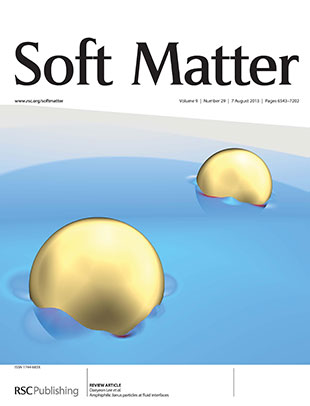58th Annual Report on Research 2013 Under Sponsorship of the ACS Petroleum Research Fund
Reports: DNI551132-DNI5: Electric Field-Induced Interfacial Behavior of Janus Particles at an Oil-Water Interface
Daeyeon Lee, University of Pennsylvania
In the second year, we investigated 1) the lateral interaction of Janus cylinders at an oil-water interface, 2) the behavior of asymmetrically hydrophilic cylinders at the air-water interface, 3) spontaneous transport of spherical particles through three phase fluid boundary between air, water and oil, and 4) thermodynamic stability of Janus dumbbell stabilized emulsions. Below is the summary of our work in the second year:
Copyright © 2014 American Chemical Society












